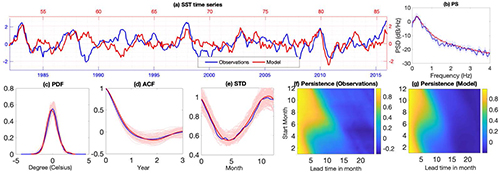
A Yale-led study has produced an innovative way to predict the El Niño Southern Oscillation (ENSO) — the largest interannual variability process in Earth’s climate — by using limited data to reveal hidden features.
The warm phase of ENSO is called El Niño, a phenomenon that, while driven by the air-sea interactions in the tropical Pacific Ocean, affects weather, crops, and public safety across much of the planet. Therefore, accurate estimates of ENSO are crucial to predicting a wide range of regional and global climate events.
There are two traditional methods that scientists use to model ENSO: state-of-the-art, coupled general circulation models (GCMs), and low-order statistical models, which rely on observed statistics. GCMs provide better representations of air-sea interactions in the tropical Pacific, while statistical models are able to characterize the large-scale features of ENSO and require less computational assistance.
In a new study in the journal Physical Review Research, John Wettlaufer, Yale’s A.M. Bateman Professor of Geophysics, Mathematics, and Physics, and his colleagues, offer a different approach.
“We have developed a stochastic theory that reproduces the large-scale dynamical and statistical characteristics of ENSO,” Wettlaufer said. “By harnessing a confluence of modern applied mathematical methods and physical modeling, our approach incorporates only a subset of observations from which we infer unobserved quantities, such as the depth of the ocean thermocline and the wind bursts on the ocean surface.”
The hybrid method eliminates the need to run large, numerical models or search through every bit of available data, the researchers said.
The other authors of the study are first author Ludovico Giorgini and Woosok Moon of the Nordic Institute for Theoretical Physics in Stockholm, and Nan Chen of the University of Wisconsin-Madison.
This Article has been extracted from the Yale News article of July 6, 2022. For more information, please see the full Yale News article, and the article in Physical Review Research linked below.